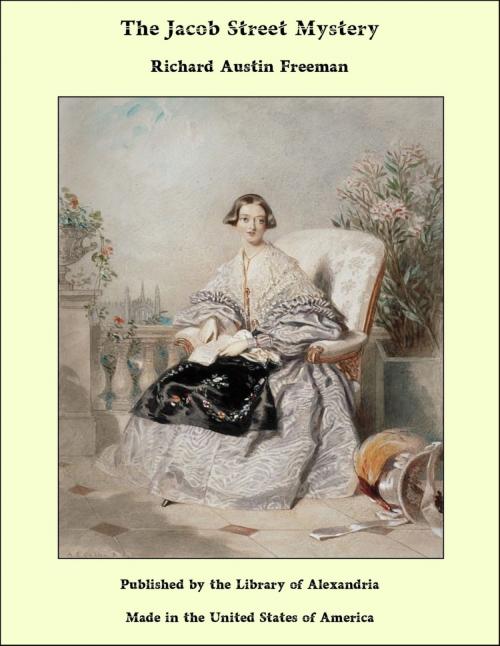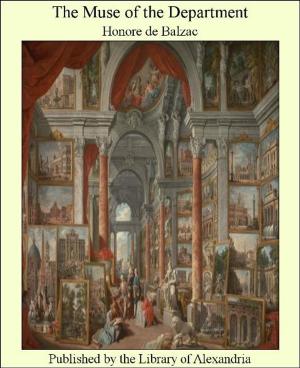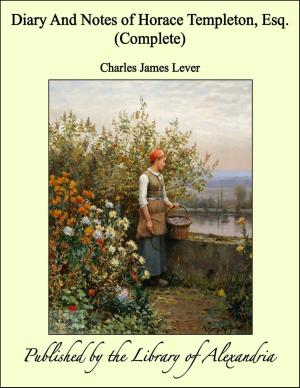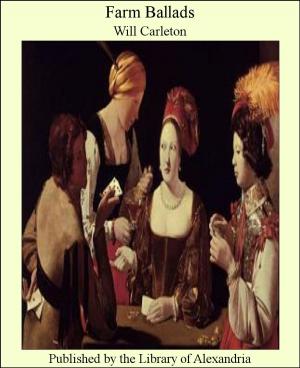The Jacob Street Mystery
Nonfiction, Religion & Spirituality, New Age, History, Fiction & Literature| Author: | Richard Austin Freeman | ISBN: | 9781465627438 |
| Publisher: | Library of Alexandria | Publication: | March 8, 2015 |
| Imprint: | Language: | English |
| Author: | Richard Austin Freeman |
| ISBN: | 9781465627438 |
| Publisher: | Library of Alexandria |
| Publication: | March 8, 2015 |
| Imprint: | |
| Language: | English |
ON a pleasant, sunny afternoon near the end of May, when the late spring was just merging into early summer, Mr. Thomas Pedley (Tom Pedley to his friends, or more usually plain Tom) was seated on a substantial sketching stool before a light bamboo easel on which was fixed an upright canvas measuring eighteen inches by twelve. To an expert eye, his appearance, his simple, workmanlike outfit, the leisurely ease with which he handled his brush, and the picture which was growing into shape on the canvas, would all have suggested a competent and experienced landscape painter. And such, in fact, was Tom Pedley. From his early boyhood, some forty-odd years ago, drawing and painting had been his one absorbing passion, coupled with that love of the countryside that marks the born landscape artist. To him that countryside, largely unspoiled in his early days, was an inexhaustible source of delight and a subject of endless study and meditation. In his daily rambles through meadow or woodland, by farmyards or quiet hamlets, every journey was a voyage of exploration yielding fresh discoveries; new truths of characteristic form and subtle, unexpected colour to be added to his growing store of knowledge of those less obvious aspects of nature which it is the landscape painter’s mission to reveal. And as the years passed and the countryside faded away under the withering touch of mechanical transport, that knowledge grew more and more precious. Now, the dwindling remnants had to be sought and found with considered judgment and their scanty material eked out with detail brought forth from the stores of the remembered past. The picture which was shaping itself on the canvas was an example of this application of knowledge gained by experience. On the wall of a gallery it would have suggested to the spectator an open glade in some vast woodland. In fact, the place was no more than a scrubby little copse, the last surviving oasis in the squalid desert of a “developing” neighbourhood. From his “pitch,” ensconced in a clump of bushes, Tom could hear, faint and far away, the strident hoots of motor cars, the rumble of omnibuses, and the clatter of lorries; and but a hundred yards distant was the path by which he had come, a rutted track that led from a half-built street at one end to a dismantled farmyard at the other. Nevertheless, apart from the traffic noises, the place was strangely peaceful and quiet, its silence accentuated by the natural sounds that pervaded it. Somewhere in the foliage hard by, a thrush sang joyously, and on a branch just overhead a chaffinch repeated again and again his pleasant little monotonous song. And the solitude was as perfect as the quiet. The rough path seemed to be untrodden by the foot of man, for, during the two hours that Tom had been at work, not a soul had passed along it. At length, as he paused to fill his pipe and take a thoughtful survey of his picture, the sound of voices was followed by the appearance of two men walking slowly along the path, conversing earnestly though in low tones. Tom could not hear what they were saying, though the impression conveyed to him was that their manner was rather the reverse of amicable. But in fact he gave them little attention beyond noting the effect of the dark, sharply defined shapes against the in definite background; and even this interested him but little as his subject required no figures, and certainly not one in a bowler hat. So he continued filling his pipe and appraising his afternoon’s work as they walked by without noticing him — actually, he was almost invisible from the path —and as they passed out of sight he produced his matchbox and was about to strike a light when a third figure, that of a woman, made its appearance, moving in the same direction as the others.
ON a pleasant, sunny afternoon near the end of May, when the late spring was just merging into early summer, Mr. Thomas Pedley (Tom Pedley to his friends, or more usually plain Tom) was seated on a substantial sketching stool before a light bamboo easel on which was fixed an upright canvas measuring eighteen inches by twelve. To an expert eye, his appearance, his simple, workmanlike outfit, the leisurely ease with which he handled his brush, and the picture which was growing into shape on the canvas, would all have suggested a competent and experienced landscape painter. And such, in fact, was Tom Pedley. From his early boyhood, some forty-odd years ago, drawing and painting had been his one absorbing passion, coupled with that love of the countryside that marks the born landscape artist. To him that countryside, largely unspoiled in his early days, was an inexhaustible source of delight and a subject of endless study and meditation. In his daily rambles through meadow or woodland, by farmyards or quiet hamlets, every journey was a voyage of exploration yielding fresh discoveries; new truths of characteristic form and subtle, unexpected colour to be added to his growing store of knowledge of those less obvious aspects of nature which it is the landscape painter’s mission to reveal. And as the years passed and the countryside faded away under the withering touch of mechanical transport, that knowledge grew more and more precious. Now, the dwindling remnants had to be sought and found with considered judgment and their scanty material eked out with detail brought forth from the stores of the remembered past. The picture which was shaping itself on the canvas was an example of this application of knowledge gained by experience. On the wall of a gallery it would have suggested to the spectator an open glade in some vast woodland. In fact, the place was no more than a scrubby little copse, the last surviving oasis in the squalid desert of a “developing” neighbourhood. From his “pitch,” ensconced in a clump of bushes, Tom could hear, faint and far away, the strident hoots of motor cars, the rumble of omnibuses, and the clatter of lorries; and but a hundred yards distant was the path by which he had come, a rutted track that led from a half-built street at one end to a dismantled farmyard at the other. Nevertheless, apart from the traffic noises, the place was strangely peaceful and quiet, its silence accentuated by the natural sounds that pervaded it. Somewhere in the foliage hard by, a thrush sang joyously, and on a branch just overhead a chaffinch repeated again and again his pleasant little monotonous song. And the solitude was as perfect as the quiet. The rough path seemed to be untrodden by the foot of man, for, during the two hours that Tom had been at work, not a soul had passed along it. At length, as he paused to fill his pipe and take a thoughtful survey of his picture, the sound of voices was followed by the appearance of two men walking slowly along the path, conversing earnestly though in low tones. Tom could not hear what they were saying, though the impression conveyed to him was that their manner was rather the reverse of amicable. But in fact he gave them little attention beyond noting the effect of the dark, sharply defined shapes against the in definite background; and even this interested him but little as his subject required no figures, and certainly not one in a bowler hat. So he continued filling his pipe and appraising his afternoon’s work as they walked by without noticing him — actually, he was almost invisible from the path —and as they passed out of sight he produced his matchbox and was about to strike a light when a third figure, that of a woman, made its appearance, moving in the same direction as the others.















